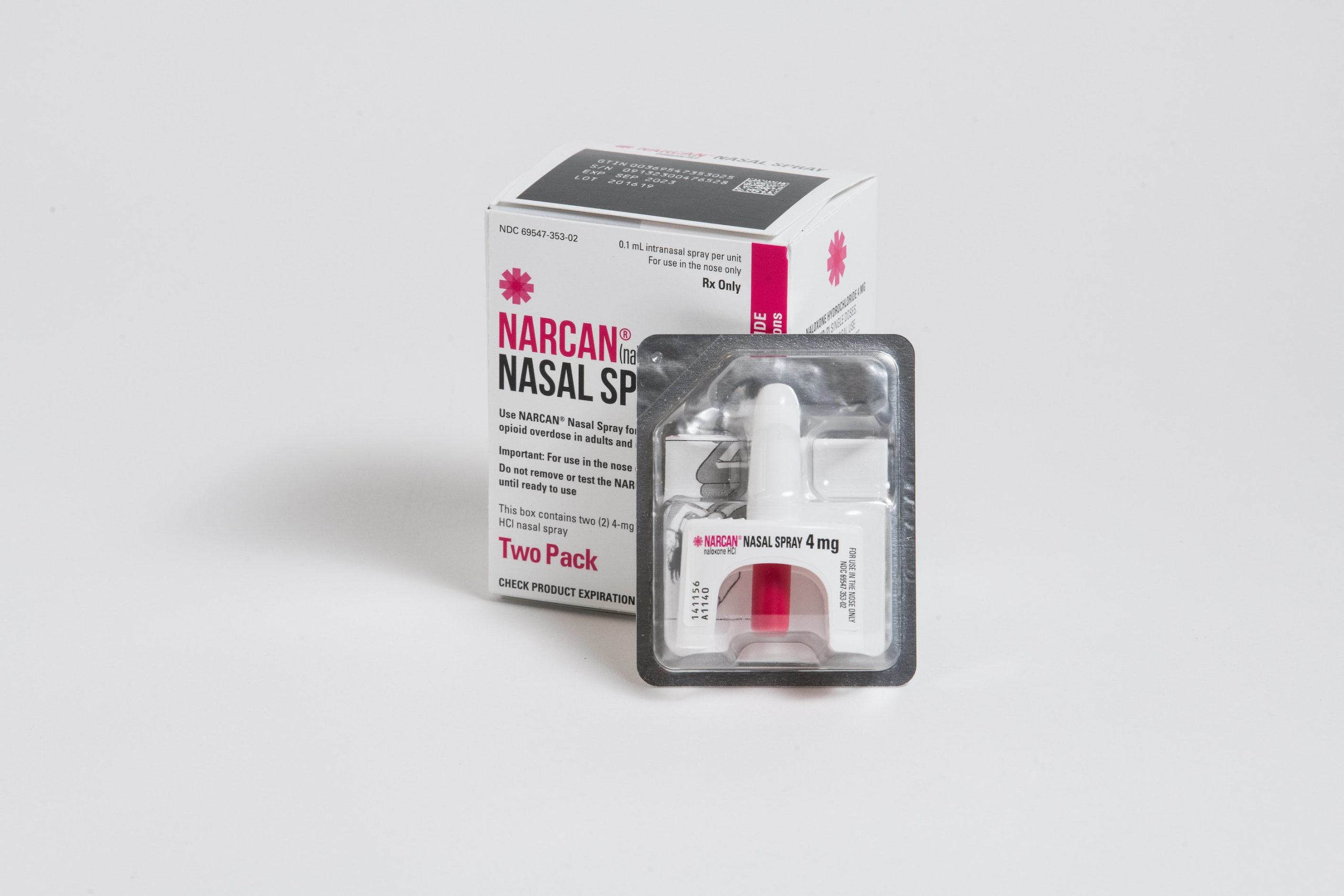What is an overdose?
Overdose (OD) happens to a person when a toxic amount of a drug, or multiple drugs, overwhelms the body1. Overdosing can occur with a variety of substances, even over-the-counter painkillers and alcohol.
Opioid overdoses occur when there are too many opioids in the body or a combination of opioids and other drugs. This type of overdose leads to the victim experiencing inadequate breathing and being unresponsive to stimulation. While overdose can happen with a variety of substances, this article will focus on opioid overdoses precisely, due to the increase in opioid overdoses.
What happens to the brain?
Opioids fit into receptors, which affect the drive to breathe. When someone cannot breathe or is not breathing adequately, the oxygen levels in the blood decrease and lips and fingers turn blue. This can lead to severe hospitalization or even death, as oxygen starvation can lead to vital organs stopping. Following the shutdown of the heart or brain, the individual can become unconscious, fall into a coma, or die.
Brain damage begins after 3-5 minutes without oxygen, which quickly can lead to death. With opioid overdoses specifically, survival is entirely dependent on breathing and oxygen. Heroin, prescription opioids (Oxycontin, Fentanyl, Morphine, Vicodin, Percocet, etc.), and other downers, such as alcohol and benzodiazepines (Xanax, Klonopin, Valium, Ativan, etc.) are a dangerous combination. These all affect the body’s central nervous system, which slows down breathing, blood pressure, and heart rate, which in turn reduces body temperature2.
Signs of a Drug Overdose
If you are concerned that someone you know may be overdosing from drugs, here are some signs to look out for. Note that these signs are specifically for Opioid overdoses, such as Heroin, Methadone, Oxycontin, etc.
- Shallow or absence of breathing
- Loud snoring/gurgling noises
- Blue/gray nails, fingers, or lips
- Unconscious, not responding3
- Small, constricted ‘pinpoint pupils’
- Falling asleep, losing consciousness
- Limp body
- Cold/clammy skin4
How to Respond to an Overdose
If you are in the presence of someone who is experiencing an opioid overdose, immediate medical attention is imperative. The first step is to see if anyone in the area is an EMS worker or trained medical professional. If no one in the area is experienced, then the next step is to call 911 so the victim can get treatment immediately. While waiting for EMS to arrive, here are some things to do:
- IF the person is breathing on their own, then place the person in the ‘recovery position’ on their side. This can prevent them from choking.
- IF the person is NOT breathing on their own, place them on their back and lift their chin.
- IF you see something in the person’s mouth, remove it.
- Administer oxygen (if available) or perform rescue breathing if able by giving mouth-to-mouth breaths every five seconds until the individual starts to breathe on their own.
- Keep the person warm and stay with them.
- Administer Naloxone if available. Before administering, make sure to check the expiration date.
- Note that even if Naloxone is administered and the person is conscious, the overdose can happen again after 30 minutes. Naloxone only works for a short time.
Additionally, here are some things NOT to do:
- Do not try to stimulate the person, such as slapping or jerking them. This can lead to injury. The person may be unconscious. You can try rubbing your knuckles on the individual’s sternum to try to wake them but if they are not reacting to this, wait for the medical professionals to arrive.
- Do not try putting the person into cold water. This can lead to falling, drowning, or the victim going into shock.
- Do not inject them with any sort of substance. The only treatment that is safe to use is naloxone.
- Do not try to induce vomiting. The person can choke or inhale vomit into the lungs, which can lead to a fatal injury5.
What is Naloxone/Narcan?
Naloxone is a life-saving medication. This medication can reverse an opioid overdose when given in time. It reverses the overdose by blocking the effects of the opioids. It is easy to use and small, making it easy to carry. There are two types that can be administered: prefilled nasal spray and injectable. Both of these types are safe to use, effective, and can save a life6.

Narcan is used for overdose
Facts About Overdose
- When someone takes a drug, they can slowly stop breathing minutes to hours after the initial use. While there are times that people can die instantaneously from an overdose, more often than not there is time to intervene between the start of the overdose and the point of no return for the individual.
- Overdose happens most commonly when:
- someone has left jail, prison, rehab, detox, or the hospital in the past few weeks.
- different drugs or alcohol are used at the same time.
- the individual is smoking or shooting up alone7.
- Naloxone will not harm someone if they are overdosing on drugs other than opioids, so it is beneficial to do it even if unsure of the types of drugs they have taken.
- In nearly 40% of overdose deaths, someone else was present. Having naloxone available allows bystanders to prevent a fatal overdose and save lives.
- Nearly 50,000 people died from opioid-involved overdose in 2019
- Based on the CDC Vital Signs report, 80% of overdose deaths occurred inside a home.
- In the United States, most states have Good Samaritan Laws in place, which protect individuals who are overdosing and those assisting them in an emergency from arrest, charges, or a combination of the two 8.
Seeking Treatment
If you are looking for a therapist specializing in substance use, our therapists through Online-Therapy.com provide Cognitive Behavioral Therapy (CBT)
We have a variety of therapists who would love to help you with mental health concerns. Our platform offers a complete online therapy toolbox for individuals and couples! Our site has multiple options, which involve time with a personal therapist who can support you throughout your journey. If this is something you have an interest in, we would love to hear from you.




Leave A Comment